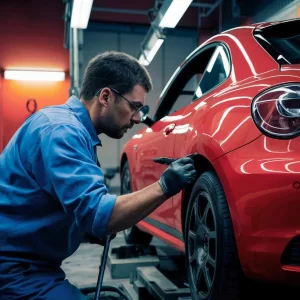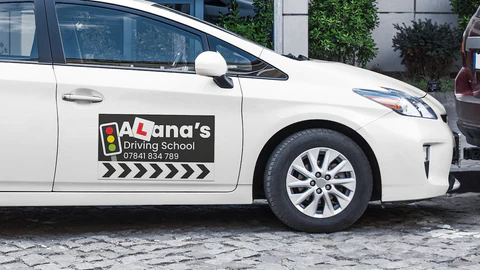It is important to take care of your vehicle in order to ensure its reliability, longevity and resale price. Maintenance can prevent expensive repairs and keep you on the road. Here are nine tips for maintaining your car.
1. Regular Oil changes
Your engine’s lifeblood is oil. Oil lubricates moving parts, reduces heat, and reduces friction. Oil breaks down over time and can become contaminated with dirt or debris. This can lead to engine wear and damage. Oil changes are essential for engine health.
Steps for Changing Oil:
- Turn off your engine and park the car on an even surface.
- Remove the drain plug and place a drain pan underneath the oil pan.
- Drain the oil completely.
- Remove the old filter and replace the drain plug.
- Install the new oil filter, and lubricate the rubber gasket.
- Use the type of oil and the amount recommended for your engine.
- Dipstick: Check oil level and add more as needed.
2. Keep your tires in good shape
Maintaining your tires in good condition for safety and performance is important. Check your tire pressure regularly, rotate your wheels, and check them for damage and wear.
Tire Maintenance Tips:
- Check Tire pressure: Use the tire pressure gauge to check that your tires are at the recommended pressure. This pressure is usually listed in the owner’s guide or on an sticker located inside the driver door.
- Rotate Your Tires: Rotating tires every 6,000-8,000 miles will help ensure that they wear evenly and prolong their life.
- Check for Wear and Damage: Look out for irregular tread wear, punctures and sidewall bulges. If tires are damaged or worn, replace them.
- Wheel Balancing and Alignment: Unbalanced or misaligned wheels can affect tire wear and handling. Regularly check your wheel alignment and balance.
3. Replace and check air filters regularly
Air filters keep dirt and debris out of the engine and cabin. These filters can become clogged over time and affect the engine’s performance and the air quality in your car.
Changing Engine Air Filter:
- Find the air filter housing underneath the hood.
- Remove the old filter by opening the housing.
- Install a new filter, and then secure the housing.
Changing Cabin Air Filter:
- Find the cabin air filter. It is usually located behind the glovebox or under the dashboard.
- Install a new filter after removing the old one.
4. Maintaining the Cooling System
Coolant (antifreeze), which circulates through your engine and radiator, prevents overheating. Coolant can lose its effectiveness over time as it becomes contaminated.
Cooling system maintenance:
- Check Coolant: Make sure the level of coolant is between the “minut” and “maximum” marks on your coolant reservoir.
- Refill and Flush Coolant: Always follow the manufacturer’s recommendations for flushing and re-filling coolant. This is usually every 30,000 to 50 000 miles.
- Inspect Hoses & Radiator: Check for cracks, leaks and wear. Replace any damaged hoses, and fix any leaks that may have occurred in the radiator.
5. Replace and inspect belts and hoses
The engine, cooling system and other accessories of your vehicle all depend on the belts and hoses. They can wear out, crack, or become brittle over time.
Belt and Hose maintenance:
- Check Belts: Search for cracks, fraying and glazing. If they show signs that they are worn, replace them.
- Check Hoses: Squeeze hoses and check for bulges or soft spots. Replace any hoses which are damaged, or that feel too soft or hard.
6. Brake System Repair
Regular maintenance of the brake system is vital for your safety. Brakes will wear down over time, and they need to be serviced and inspected to make sure they work correctly.
Brake maintenance tips:
- Inspect brake pads and rotors: Check for signs of wear. Replace brake pads that are less than 1/4-inch thick, or if there is a grinding or squeaking noise.
- Check brake fluid: Make sure the brake fluid is in the range recommended by the manufacturer and replace every 2 to 3 year or according to the manufacturer’s instructions.
- Bleed Brakes: By bleeding brakes you can remove air bubbles in the brake lines, allowing for a proper brake performance.
7. Battery Care
Battery maintenance is essential to ensuring your vehicle starts and runs reliably. Roadside assistance is often called for battery issues.
Battery Maintenance
- Check the Battery Terminals: Make sure that they are clean and corrosion-free. If necessary, clean them with baking soda and water.
- Check Battery Charge: Use the voltmeter for checking battery charge. A fully charged battery will read 12.6 volts and higher.
- Replace battery: If you have a battery that is older than three years or has signs of weakness, it may be worth replacing to prevent unexpected failures.
8. Keep Your Car Clean
Regular cleaning will not only keep your car in good condition, but it will also protect the interior and paint from damage. Over time, dirt, road salt, and grime can cause corrosion.
Car Care Tips:
- Wash Exterior: Use car-specific soap with a soft cloth or sponge to wash your vehicle. Rinse well and then dry using a microfiber cloth.
- Wax Paint: Use a wax coat every few months to enhance the shine and protect the paint.
- Clean Interior: Vacuum seats, carpets and floor mats. Use a suitable cleaner to wipe down the dashboard, doors, and any other surfaces.
- Protect Upholstery: Use floor mats and seat covers to protect interiors from stains and wear. Use a UV protector on the dashboard, and any other plastic surfaces. This will prevent cracking and fading.
9. Follow Manufacturer’s Maintenance Schedule
The manufacturer of your car will provide a maintenance schedule that is tailored to the specifics of your vehicle. This schedule will ensure that all systems and components critical to your vehicle are serviced and inspected at the right intervals.
Maintenance schedule tips:
- Regular Inspections: Have a mechanic inspect your car according to the schedule set by the manufacturer. Check the engine, transmission brakes suspension and other systems.
- Service Intervals: Follow the recommended service intervals when it comes to oil changes, fluid changes, filter changes and other routine maintenance tasks.
- Maintaining a Record: Keep detailed records of all repairs and maintenance performed on your vehicle. It is a good way to keep track of what you have done, and it can also increase the value of your car.
Conclusion
Regular maintenance and attention in detail are essential to taking care of your vehicle. Follow these nine top car care tips to ensure that your vehicle is reliable, safe and efficient for many years. Car care includes regular oil changes, tire maintenance, air filter replacements and cooling system maintenance. It also involves belt and hose inspections and brake system upkeep. Maintaining your car will ensure that it performs well and lasts a long time.








